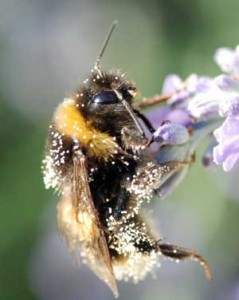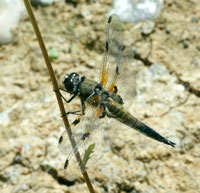National Insect Week 21st / 27th June, 2010.

World wide some million different types of insect have been identified and named, even in the U.K. some 24,000 species can be found. Insects, like bees and bumblebees are economically important in the pollination of many crops (apples etc) and flowers; others like the saproxylic beetles have a role in the recycling of the materials and nutrients from dead and decaying wood. Equally, there are many that are damaging crops, trees and woodlands such the horse chestnut leaf miner moth and the oak processionary moth.
The website for National Insect week offers pages of information on insect facts and figures on the major groups of insects:
- Flies (Diptera)
- Earwigs (Dermaptera)
- Ants, bees (Hymenoptera)
- Bugs (aphids etc) (Hemiptera)
- Dragonflies, damselfies (Odonata)
- Beetles (Coleoptera)
- Butterflies, moths (Lepidoptera)
- Lacewings (Neuroptera)
 There is advice on how to make your garden ‘insect friendly’ e.g. have a compost heap rather than dispose of it, try to have some hedgerow plants such as hawthorn or hazel. The clickable maps of the U.K. take you to an enormous number of links to local natural history societies and events.
There is advice on how to make your garden ‘insect friendly’ e.g. have a compost heap rather than dispose of it, try to have some hedgerow plants such as hawthorn or hazel. The clickable maps of the U.K. take you to an enormous number of links to local natural history societies and events.
As reported in a previous woodlands post, there are several surveys in need of volunteers / helpers, for example:-
- The great stag beetle hunt
- The scarlet malachite beetle survey
- Also, you can help plot the arrival / progress of insects arriving from Africa – such as the Painted Lady Butterfly and Humming-bird Hawk-moth .
- National Insect Week is supported by a wide range of organisations – see http://www.nationalinsectweek.co.uk/partners.php .
Comments are closed for this post.

At the end of July, there is the BIG BUTTERFLY COUNT – see
http://www.bigbutterflycount.org/
Chris
19 July, 2010